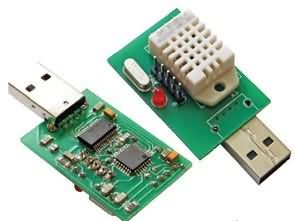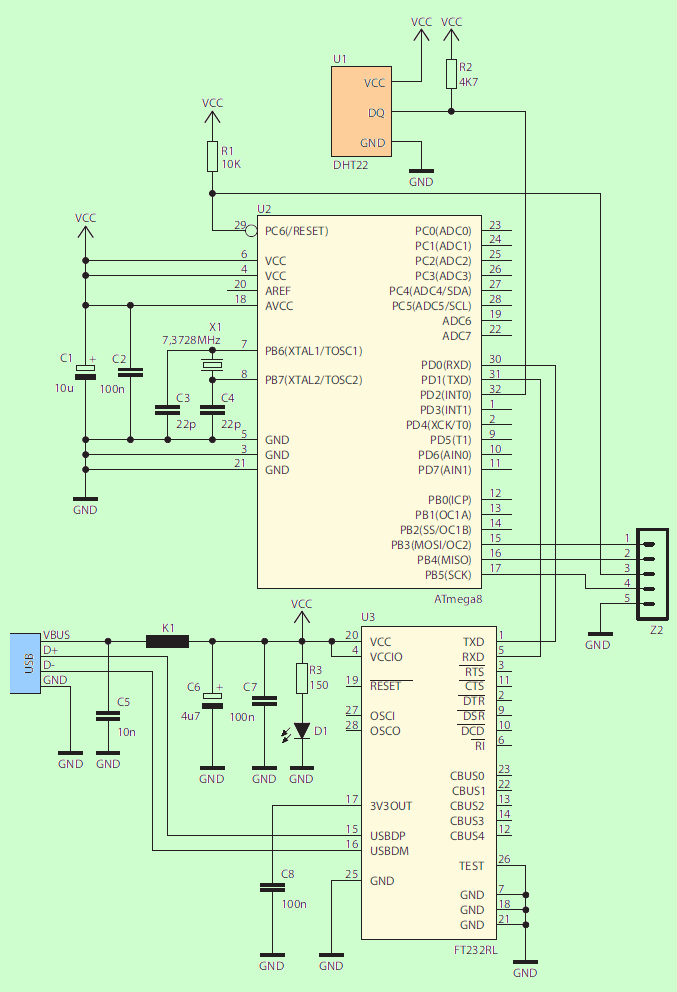Summary of THERMOMETER HYGROMETER CIRCUIT USB DHT22 ATMEGA8
This project features a compact USB thermometer and hygrometer circuit using a DHT22 sensor to measure temperature (-40 to 80 °C) with 0.1 °C resolution and humidity (0-100%) with 0.1% resolution. The device uses an ATmega8 microcontroller operating at 7.3728 MHz to ensure error-free UART communication. The design is optimized for surface mount components, making it suitable as a laptop or desktop adapter. The microcontroller is programmed in Bascom AVR, and the USB interface is handled by an FT232 chip.
Parts used in the Thermometer Hygrometer Circuit USB DHT22 ATmega8:
- DHT22 temperature and humidity sensor
- ATmega8 microcontroller (TQFP32 package)
- 7.3728 MHz quartz resonator
- FT232 USB interface chip (SSOP28 package)
- Surface mount resistors and capacitors
- Jumpers and standard serial communication components
The presented layout is a snap on a computer for measuring DHT22 temperature and humidity. It measures the temperature from -40 to 80 ° C with a resolution of 0.1 ° C and accuracy… Electronics Projects,Thermometer Hygrometer Circuit USB DHT22 ATmega8 “atmega8 projects, avr project, microcontroller projects, “
The presented layout is a snap on a computer for measuring DHT22 temperature and humidity. It measures the temperature from -40 to 80 ° C with a resolution of 0.1 ° C and accuracy of 0.2 ° C and humidity from 0 to 100% with a resolution of 0.1% and accuracy of 2%. The device was designed on a tiny size plate with the advantage of surface mount elements, so it can be used as a laptop or desktop adapter. The microcontroller control program was written in the Bascom AVR environment. The DHT22 sensortemperature and humidity reading
DHT22 THERMOMETER HYGROMETER CIRCUIT SCHEMATIC
The schematic diagram of the thermometer Its “heart” is the ATmega8 microcontroller operating with an external 7.3728 MHz quartz resonator. The clock frequency was chosen so that the transmission error of the UART system was 0%.
The project uses the ATmega8 microcontroller in the smd TQFP32 housing and the FT232 chip in the SSOP28 enclosure, which, due to the raster patches, needs to be mounted on the rack. After soldering the microcontroller and the FT232 system, solder all jumper and serial components in order from smallest to largest.
Source: THERMOMETER HYGROMETER CIRCUIT USB DHT22 ATMEGA8


